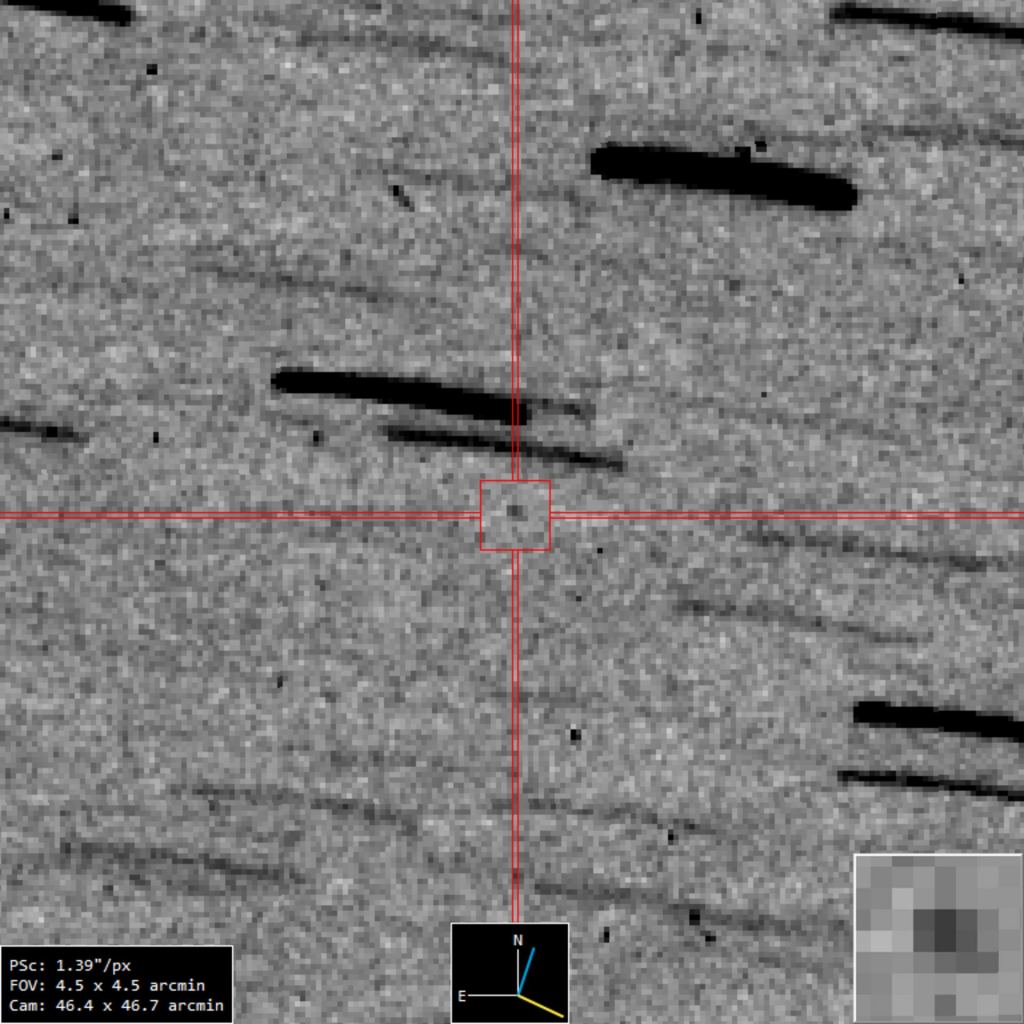On September 8th, 2016, NASA’s OSIRIS-REx (Origins, Spectral Interpretation, Resource Identification, Security, Regolith Explorer) mission launched from Earth. Its primary mission was to rendezvous with the asteroid Bennu, a carbonaceous Near-Earth Asteroid (NEA), obtain samples from its surface, and return them to Earth for analysis. On December 3rd, 2018, the mission reached Bennu and spent the next two years searching for the optimal place to retrieve these samples. Tomorrow, on Sunday, September 24th, the mission will finally deliver these samples to Earth for analysis.
Last week, on Saturday, September 16th, the OSIRIS-REx mission was spotted by the ESA’s Optical Ground Station (OGS) 1-meter telescope on the island of Tenerife, Spain. The spacecraft was still 4.66 km million (2.9 million mi) from Earth, but well on its way to returning. This will be the last time OSIRIS-REx will be spotted by ground-based telescopes before it reaches Earth to deliver its sample and heads back out into space.
The picture of OSIRIS-REx (shown below) is a combination of 90 individual images captured by the OGS telescope, each of which had a 36-second exposure. The small speck at the center of the image is the spacecraft on its way back to Earth, while the large streaks in the background are stars that appear warped and curved because of how the images were combined to account for the motion of the spacecraft. The images were commissioned by the ESA’s Near-Earth Object Coordination Centre (NEOCC), part of the agency’s Planetary Defence Office (PDO) responsible for identifying potentially hazardous asteroids (PHA).
 The OGS image acquired this composite image of OSIRIS-REx returning to Earth. Credit: CC BY-SA 3.0 IGO
The OGS image acquired this composite image of OSIRIS-REx returning to Earth. Credit: CC BY-SA 3.0 IGO
The OGS telescope that took the images was originally built to observe space debris in orbit and test laser and quantum communication technologies. Its purpose has since expanded to conduct surveys and follow-up studies of NEAs and night-time observations. It has also discovered dozens of minor planets and perfectly-suited to spot and snap pictures of OSIRIS-REx on its way home.
Since asteroids are essentially leftover material from the formation of the Solar System, the analysis of these samples is expected to reveal more about its history and evolution. This includes the initial stages of planet formation, how water and organic molecules were distributed to Earth and other bodies, and how life emerged on Earth (and perhaps elsewhere). While some of the sample was lost when the spacecraft’s sampler head failed to close completely (temporarily jammed open by larger rocks), NASA is confident that the spacecraft retained 400 g to over 1 kg (0.88 to 2.2 lbs) of material.
On Sunday, the mission will drop its sample capsule into Earth’s atmosphere, which will deploy chutes and land safely at the U.S. Air Force’s Utah Test and Training Range (UTTR). OSIRIS-REx will then continue onto the next leg of its mission, which will be to study Apophis, the NEA that was previously thought to pose a potential risk to Earth – aka. a Potentially-Hazardous Asteroid (PHA). The decision to rendezvous with and study this asteroid was announced on April 25th, 2022, when NASA confirmed that the mission has been extended and would henceforth be known as OSIRIS-APEX (‘APophis EXplorer’).
The mission will coincide with Apophis making an extremely close pass to the Earth on April 13th, 2029. Roughly a week later, OSIRIS-APEX will rendezvous with Apophis and orbit the asteroid for about 18 months. Simlar to what it performed with Bennu, the spacecraft will spend this time looking for an optimal place to set down and collect samples. It will also perform manuevers where it uses its thrusters to disturb regolith on Apophis’s surface to expose the material beneath, which has been shielded from cosmic rays and solar radiation and will provide more valuable data.
Similar sample-return missions have been mounted in recent years by JAXA’s Hayabusa and Hayabusa II missions, which returned samples from the asteroids Itokawa and Ryugu (respectively). Together, these missions and the samples they’ve returned have helped broaden our understanding of objects in the Solar System, its formation and evolution, and helped address some of the deeper mysteries of how life began.
Further Reading: ESA

